|
Updated April 2, 2008 |
|||
| Deltaville Boatyard is a busy place, with many many boats stored and lots of them undergoing large or small repairs. From the water it does not look very big, but it stretches on back out of sight. The travel lift is in pretty constant motion and the crane has been much in evidence stepping masts and hoisting new engines into boats, and the real rush of getting boats into the water for the summer and of transient boats heading north hasn't really started yet. | The View of the Yard from Barbara |
||
|
Barbara from the Boatyard | |||
|
My Belgian friend Luc has remarked on the number of sunrise pictures on the site and the corresponding lack of sunsets.
To a certain extent this is a consequence of living on the East Coast, and also of our tendency to get away at first
light so as to make the most of the short winter days, but here we are not trying to get anywhere, so here is a nice
dramatic sunset. | |||
|
Sunset on Jackson Creek |
|||
|
Jackson Creek is a place of great contrasts. The side opposite the boatyard is lined with trophy houses, each with its own
pretty substantial wharf, but one of these wharves is also home to a commercial fisherman with a pretty but somewhat rundown
deadrise boat.
Until recently there was a boatshop at the head of the creek where these boats were built and repaired, but I don't have much information on it yet, and I haven't seen any trace of it. | |||
|
A Typical Jackson Creek house | |||
|
A Working Deadrise Boat | |||
|
Before we ever came here I had been aware of "Deltaville" as part of the phrase "Deltaville deadrise," one of those phrases
that is really one word, like "dam' yankees." These skiffs (always called just "deadrises") are just as well suited to the steep short chop of Chesapeake Bay
as the Maine Lobsterboat is to her home waters. Several were built with square sterns, but in my opinion the prettiest have round sterns.
These boats are related to the Long Island Sound sharpies, but have V-bottoms, better for dealing with choppy water.
They are very fine forward at the waterline and fairly flat aft. This shape would be difficult to plank with fore-and-aft conventional planking and in fact the bottoms are cross-planked, with the individual planks running diagonally from the keel to the chine. At the bow the planking is just about vertical, and the twist in the planks is so great that it is typically carved into the individual planks, which works out better than trying to steam and twist them. Back in the early 80s I built a little sailboat planked this way and found it great fun. |
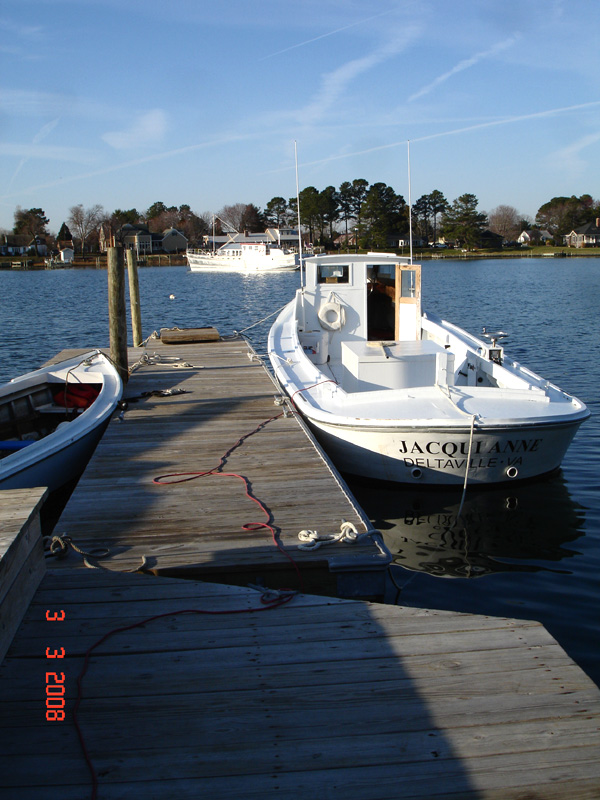
The Yard's Workboat, Jacqui Anne Named for the Owner's Wife. |
||

Another Round-Stern Deadrise | |||
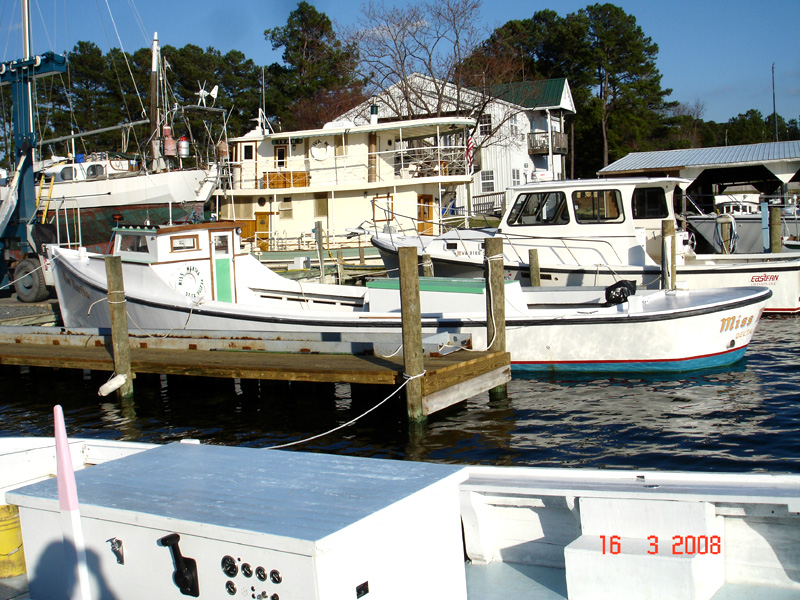 Miss Martha, a "Gentrified" Deadrise, like a "Lobster-Yacht" Miss Martha, a "Gentrified" Deadrise, like a "Lobster-Yacht"
| |||
| For a while there was a miniature "skipjack," a typical Chesapeake Bay sailing craft, lying at one of the make-ready wharves of the yard. After some time of nothing much happening, her owner spent a few days puttering and then she was gone, off to her summer home. The strongly raked mast, the false clipper bow, and the outboard rudder are typical of these boats, which were originally workboats. | |||
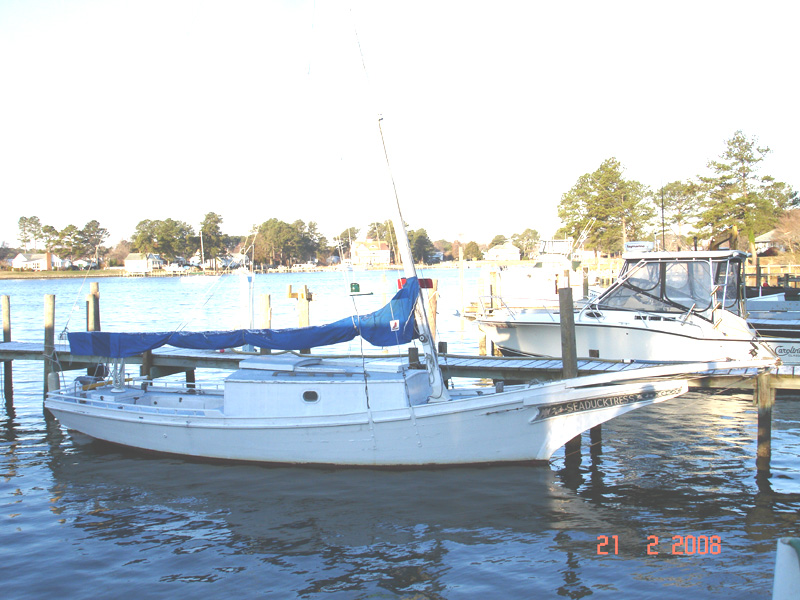
The Miniature Skipjack Seaducktress |
|||
| Occasionally there is a visiting boat (there will be many more, we are told, when all the snowbirds start going back north); this one is the research vessel Fay Slover, owned by Old Dominion University and designed by Roger Long, of Portland. She is a handsome vessel of her type, and obviously quite capable. |
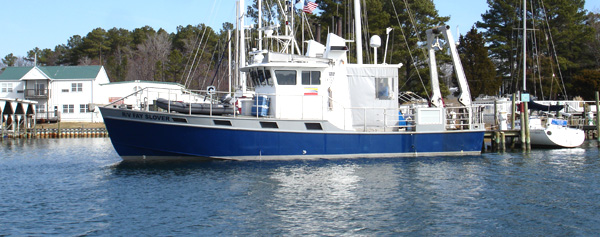
R/V Fay Slover | ||
|
Just to prove that there is actually some work being done on the boat (although it goes much slower than would be ideal),
here is a picture of the galley. Not visible in the picture are the hot and cold running water in the sink and the dimmable downspots
on the galley peninsula. There is still no trim,
but that will come when we are home and have a real shop at our disposal. Even without trim or paint, however, Barbara, who
is a trouper, finds it possible to cook great meals and bake bread.
|
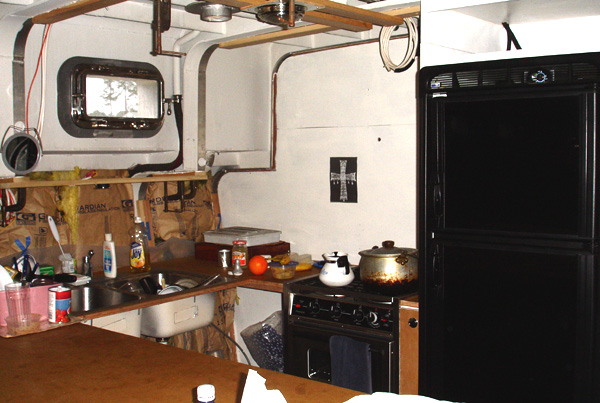
The Galley in February | ||
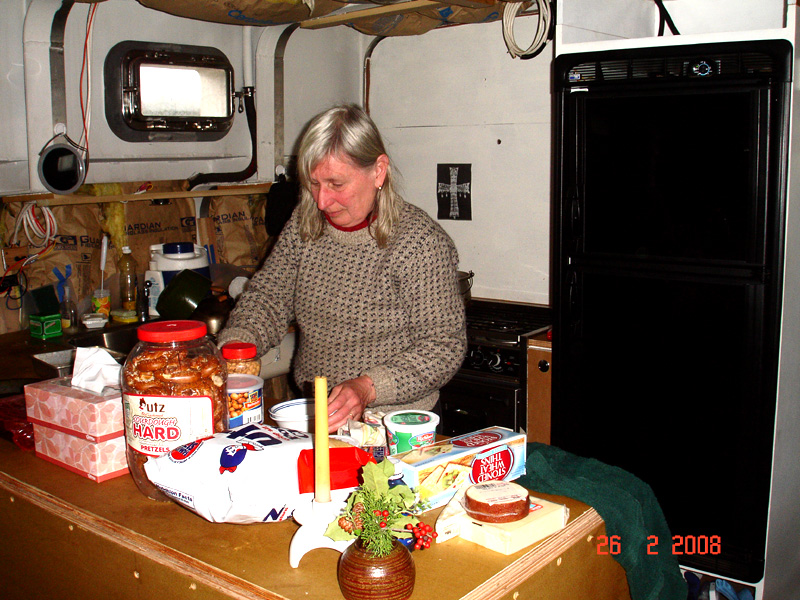
Barbara Setting Out Munchies for a Party | |||
| I have set up a rudimentary shop in what will be the guest cabin, forward of the saloon; this lets me contain the mess and also assemble parts before installing them. Working on a boat while living on it is not a trivial exercise, but this will surely help. I simply imported the toolbox from my shop at home and bolted it to the wall between the guest cabin and the head. |
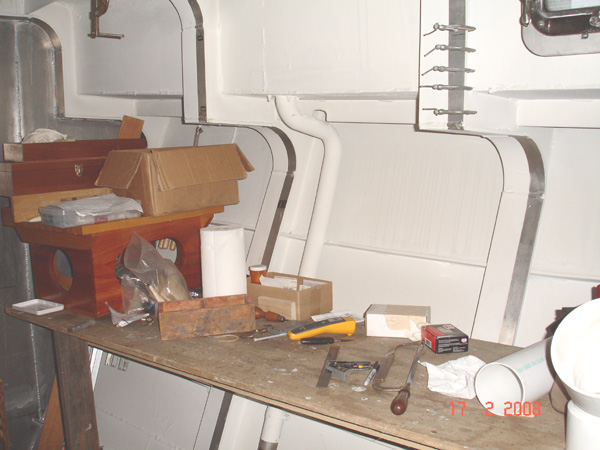
Temporary Workbench |
||
 Overview of the Temporary Shop
Overview of the Temporary Shop
|
|||
| Barbara has set up her work area in the aft cabin (where there will eventually be a proper desk for her and many bookshelves) where she can read and write articles. The historian's work cannot be stayed by lack of a proper workspace. |
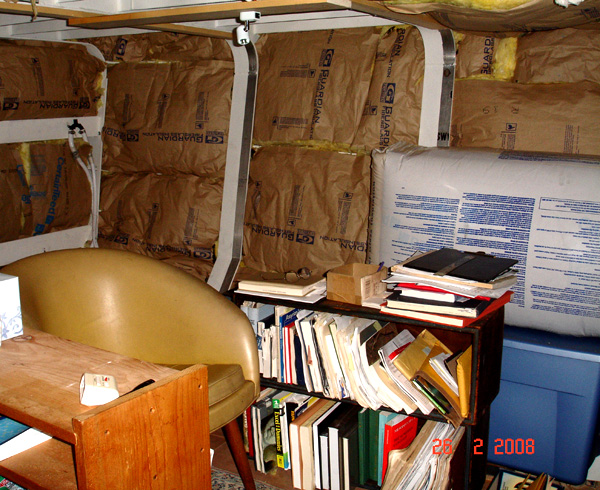
The Assyriology Factory | ||
|
Overview of the Aft Cabin |
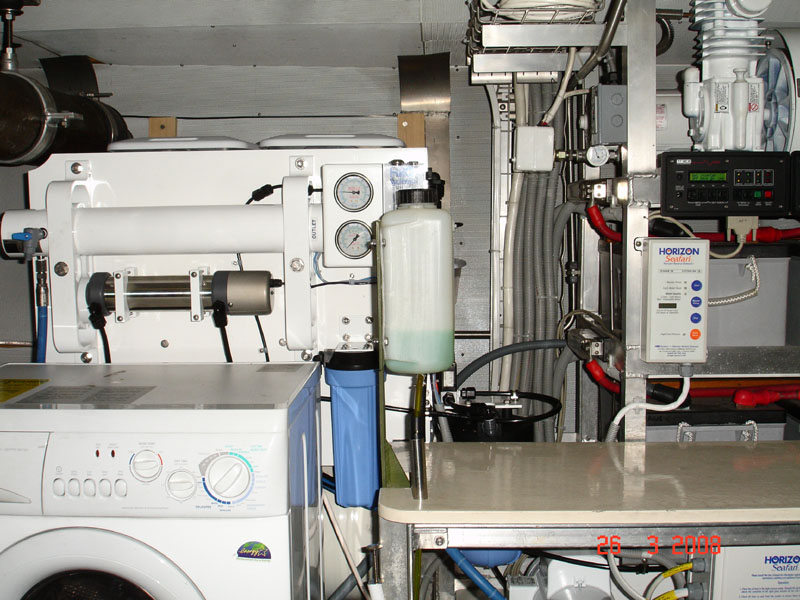
The Membrane Housing for the HRO Watermaker |
||
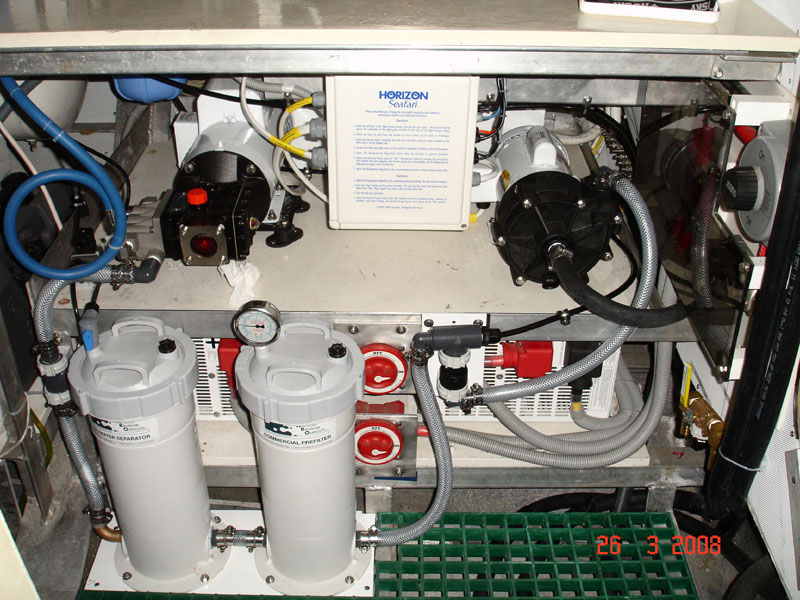 Other Watermaker Components, Large and Heavy-Duty Other Watermaker Components, Large and Heavy-Duty
| |||
| The night before we left Deltavile to head back north we had a birthday party for Barbara, with some of the marina crew, other live-aboards, and friends from the town. We were happy here, and a little sad to leave, but other responsibilities called us on. |
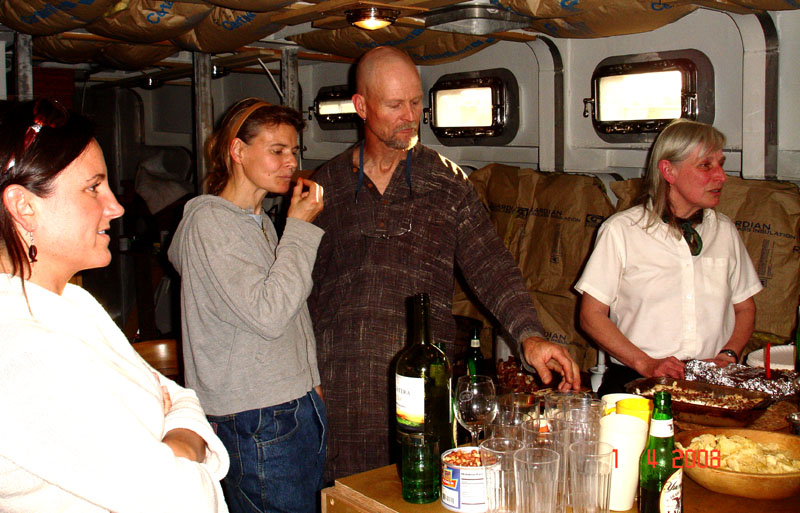
Food, Drink, and Happy Talk |
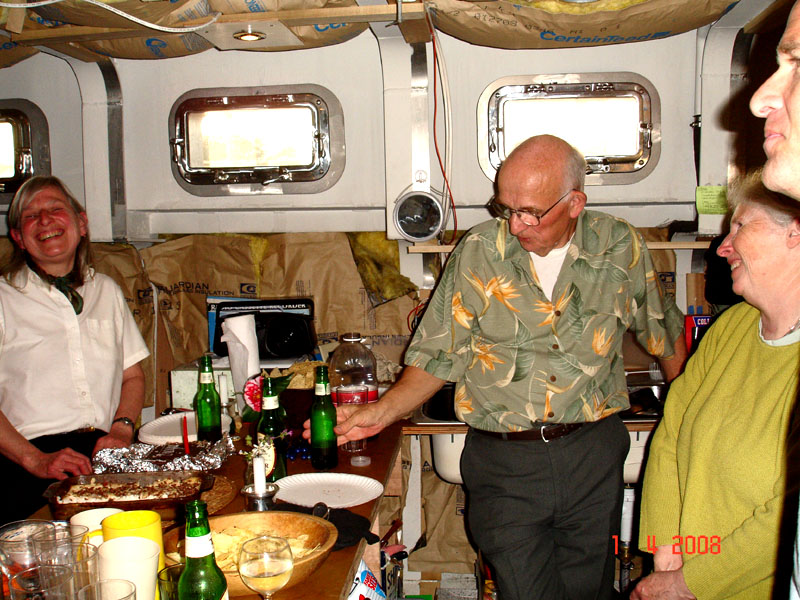 It Was a Good Story
It Was a Good Story
|
|